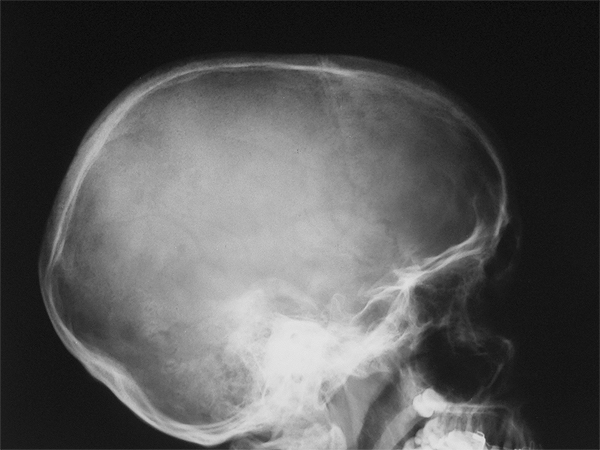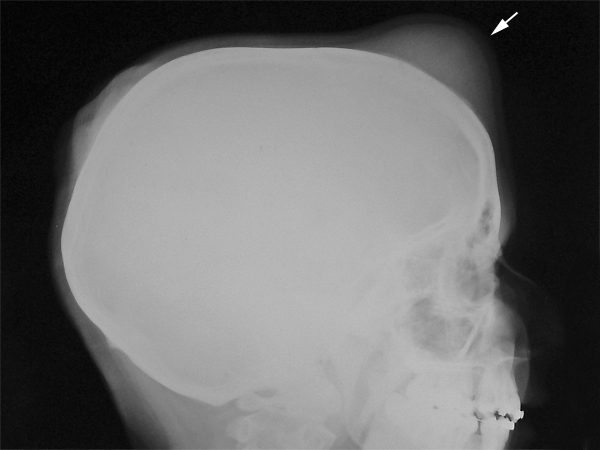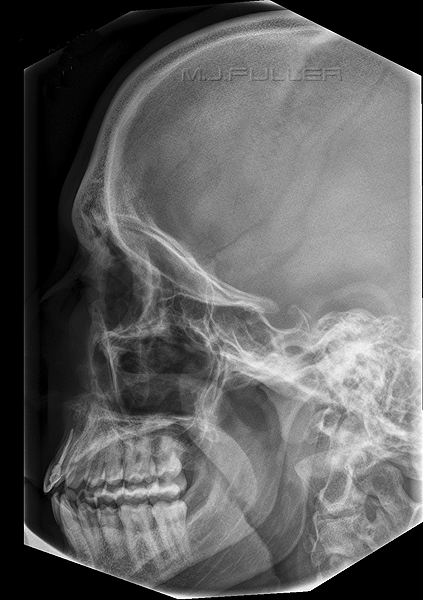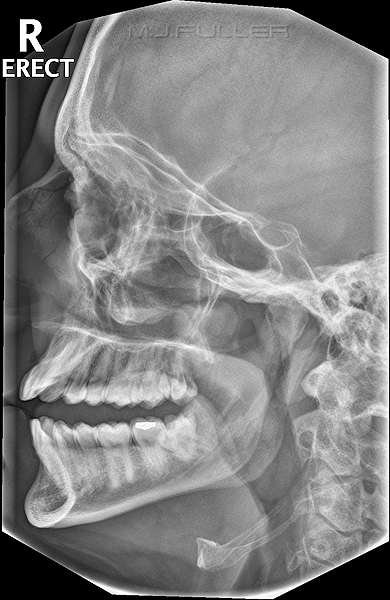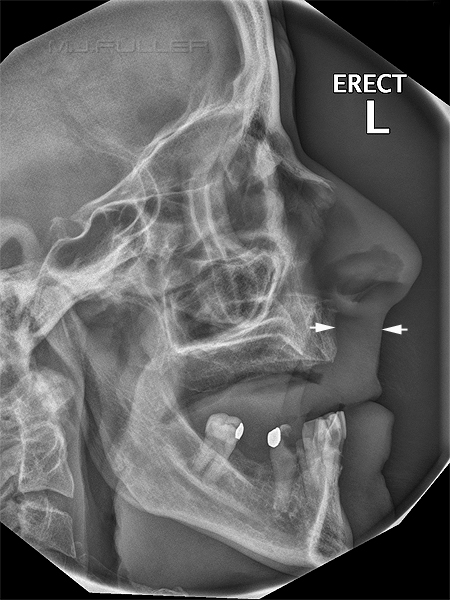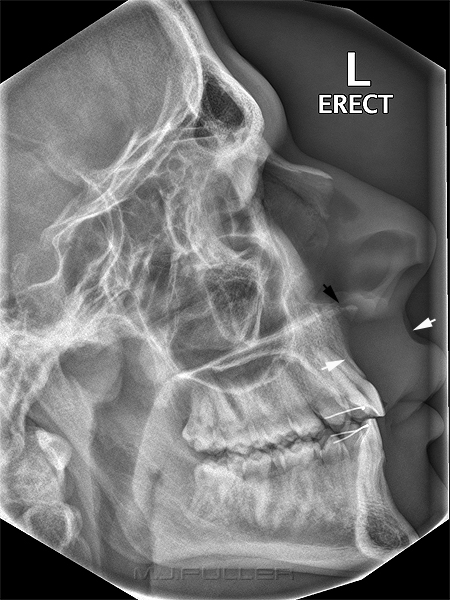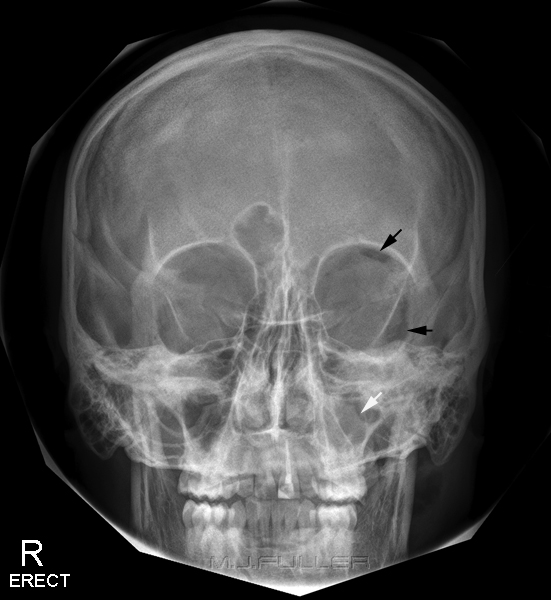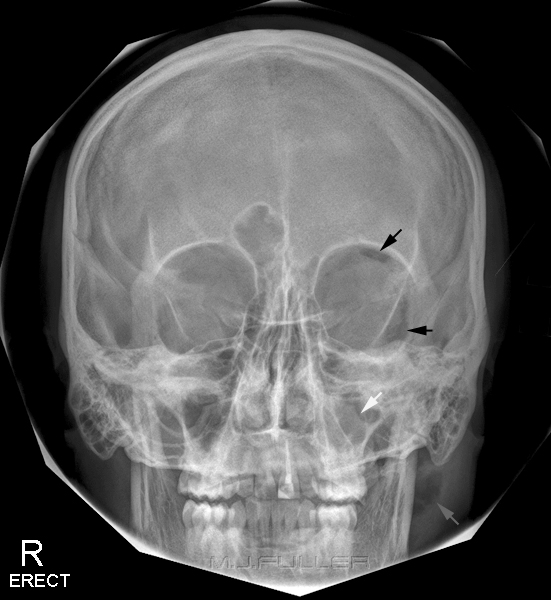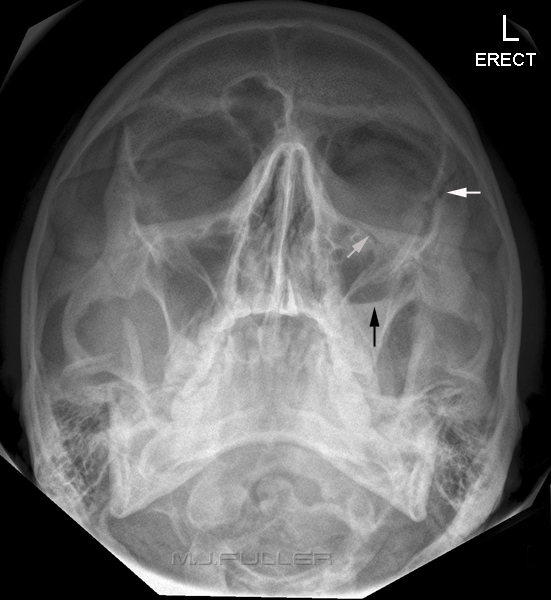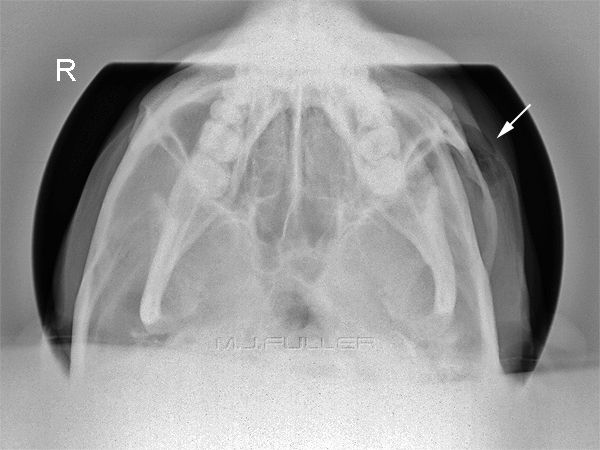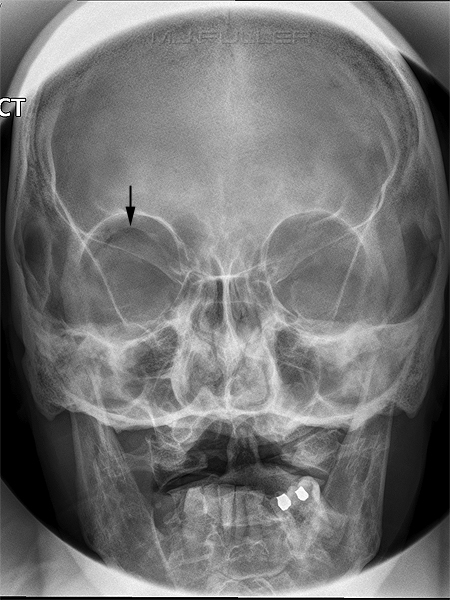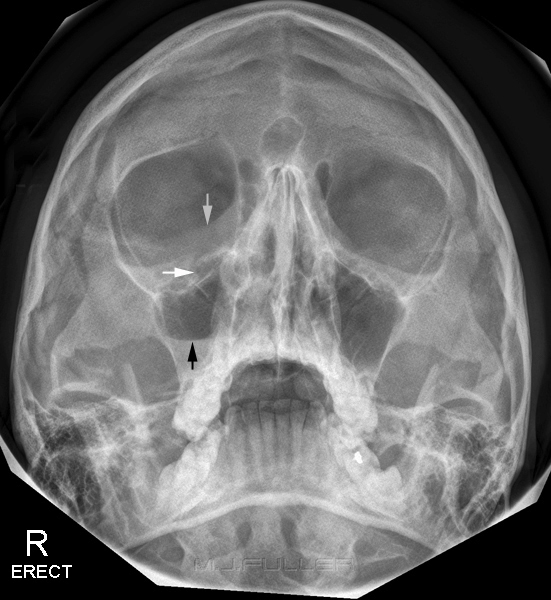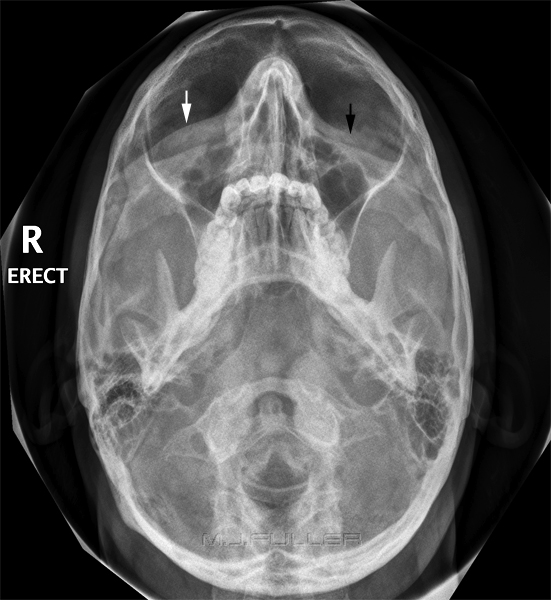Soft Tissue Signs- Skull and Facial Bones
Recent HistorySoft tissue signs of bony injury are commonly demonstrated on skull and facial bone images. This page identifies common soft tissue signs and their significance.
Algorithms and Post-processing
If you are using a digital imaging system (DR or CR) correct algorithms and appropriate post-processing are your best friends.
Soft tissue signs are of no utility if you can't see them. Consider the two lateral facial bones images shown below. Both images are taken using the same DR machine.
Case 1
Case 2
| | This is a PA 20/25 projection of the facial bones. There appears to be evidence of orbital emphysema (black arrow). This is not however orbital emphysema. This appearance is caused by air trapped beneath the eyelid. This air is typically curved and concave inferiorly. Compare this appearance to the orbital emphysema demonstrated in Case 1 above. |
Case 3
The OM30 view similarly demonstrates soft tissue swelling over the right maxillary sinus (white arrow). Compare this soft tissue line with that on the left (black arrow)
Discussion
Facial bone soft tissue signs can indicate underlying bony injury. Good radiographic technique will aid in the visualisation of skull and facial bone soft tissues. The radiographer's goal should be to create an image that displays as much information as possible rather than creating an image that is visually appealing.
... back to the Applied Radiography home page
